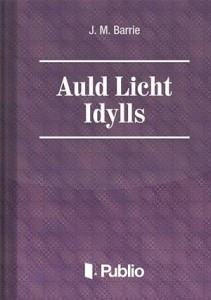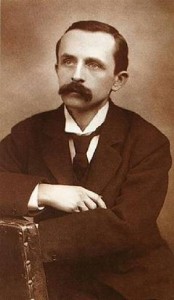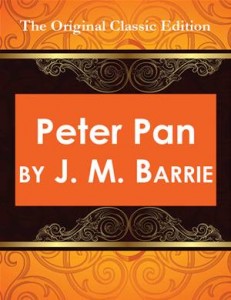Consisting of:Peter and Wendy (Peter Pan)Peter Pan In Kensington GardensThe Little White BirdPeter Pan; or, the Boy Who Wouldn't Grow Up or Peter and Wendy is J. M. Barrie's most famous work, in the form of a 1904 play and a 1911 novel. Both versions tell the story of Peter Pan, a mischievous little boy who can fly, and his adventures on the island of Neverland with Wendy Darling and her brothers, the fairy Tinker Bell, the Lost Boys, the Indian princess Tiger Lily, and the pirate Captain Hook. The play and novel were inspired by Barrie's friendship with the Llewelyn Davies family. Barrie continued to revise the play for years after its debut; the novel reflects one version of the story.The play debuted in London on 27 December 1904 with Nina Boucicault, daughter of playwright Dion Boucicault, in the title role. A Broadway production was mounted in 1905 starring Maude Adams. It was later revived with such actresses as Marilyn Miller and Eva Le Gallienne. The play has since seen adaptation as a pantomime, stage musical, a television special, and several films, including a 1924 silent film, a 1953 animated Disney full-length feature, and a 2003 live action production. The play is now rarely performed in its original form on stage in the United Kingdom, whereas pantomime adaptations are frequently staged around Christmas. In the U.S., the original version has also been supplanted in popularity by the 1954 musical version, which became popular on television.The novel was first published in 1911 by Hodder & Stoughton in the United Kingdom and Charles Scribner's Sons in the United States. The original book contains a frontispiece and 11 half-tone plates by artist F. D. Bedford (whose illustrations are still in copyright in the EU). The novel was first abridged by May Byron in 1915, with Barrie's permission, and published under the title Peter Pan and Wendy, the first time this form was used. This version was later illustrated by Mabel Lucie Attwell in 1921. The novel is now usually published under that title or simply Peter Pan. The script of the play, which Barrie had continued to revise since its first performance, was published in 1928. In 1929, Barrie gave the copyright of the Peter Pan works to Great Ormond Street Hospital, a children's hospital in London.Peter is a seven-day-old infant who, "like all infants", used to be part bird. Peter has complete faith in his flying abilities, so, upon hearing a discussion of his adult life, he is able to escape out of the window of his London home and return to Kensington Gardens. Upon returning to the Gardens, Peter is shocked to learn from the crow Solomon Caw that he is not still a bird, but more like a human ? Solomon says he is crossed between them as a "Betwixt-and-Between". Unfortunately, Peter now knows he cannot fly, so he is stranded in Kensington Gardens. At first, Peter can only get around on foot, but he commissions the building of a child-sized thrush's nest that he can use as a boat to navigate the Gardens by way of the Serpentine, the large lake that divides Kensington Gardens from Hyde Park.The Little White Bird is a novel by J. M. Barrie, published in 1902, ranging in tone from fantasy and whimsy to social comedy with dark, aggressive undertones. The book attained prominence and longevity due to several chapters written in a softer tone than the rest of the book, in which it introduced the character and mythology of Peter Pan. Those chapters were later published separately as Peter Pan in Kensington Gardens as a children's book.The Peter Pan story began as one chapter of a longer work and during the four years that Barrie worked on the book prior to publication, grew to an "elaborate book-within-a-book" of over one hundred pages.
3 tales of peter pan by j.m. barrie (illustrated)
Sobre
Talvez você seja redirecionado para outro site










